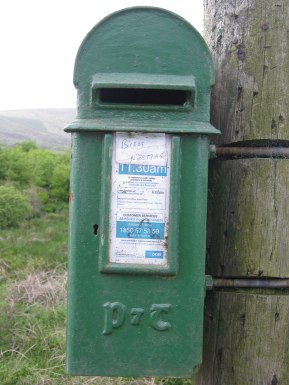 ‘Biodiversity’ simply means the variety of life which surrounds us all the time whether it be in wild, open spaces, throughout the agricultural landscape, within our back yards or even in built-up urban areas.
‘Biodiversity’ simply means the variety of life which surrounds us all the time whether it be in wild, open spaces, throughout the agricultural landscape, within our back yards or even in built-up urban areas.
There is something special about river valleys though, and the River Ilen is no exception. Where water and other natural habitats come together we will often find an enhanced biodiversity with species associated with the wider countryside interspersed with those that are specially adapted to live in or close to the water itself.
The road winds around a hairpin bend above the River Ilen before sweeping down to the old stonebridge that spans the river. This area was well known for its abundance of wild flowers in spring and summer. The Near Way was a short cut south of the bridge uphill to join the road again. It saved the long trek around the hairpin bend and was by far more interesting than the long way around. One exception was the annual walk around the long way to harvest a handful of Wild Bilberries or the hope of finding a Wild Strawberry.
 The Near Way has recently been cleared for access again after many years of neglect and one hopes that the flora will once again develop. Back in the days of pre motorcar when walking or cycling were familiar means of getting around The Near Way was a welcome short cut to walk or push your bike through. Being sheltered from harsh winds and a suntrap in the warm moist atmosphere of the south west this little pathway held an abundance of wild flowers.
The Near Way has recently been cleared for access again after many years of neglect and one hopes that the flora will once again develop. Back in the days of pre motorcar when walking or cycling were familiar means of getting around The Near Way was a welcome short cut to walk or push your bike through. Being sheltered from harsh winds and a suntrap in the warm moist atmosphere of the south west this little pathway held an abundance of wild flowers.
From Ahanafunsion Bridge to Moyny Bridge is a true semi-natural wooded river valley with a range of native tree species. Beneath the tree canopy, the heritage walk is lined with plants characteristic of woodland floors, plus those that are adapted to live near water.

Of the mammal species that occur along this stretch of the Ilen, the Otter is perhaps the most important, highly protected in Europe and a well-known indicator of the health of watercourses. Other mammals known to occur in the area include: Bat Hedgehog, Badger, Pygmy Shrew, Rabbit, Bank Vole, Wood Mouse, Red Fox, Irish Stoat and Irish Hare.
Birds are a widespread, colourful and vocal addition to our local biodiversity. Perhaps the most colourful, yet most elusive bird is the Kingfisher. Grey Herons are well-known fish-eating birds that nest communally in trees; a ‘heronry’ is found along the Ilen walks.

For anglers, the River Ilen is a well-known Atlantic Salmon and Sea Trout river with spring and autumn runs of fish from the sea upstream. Frogs are likely to have historic and distinct breeding places along the Ilen, damp areas, drainage ditches and shallow pools, all of which are important for their continued success.
The most obvious group of insects are butterflies; with different species in flight at different times of the year, there will always be a chance to see one of the 29 known resident-Irish species such as the speckled wood butterfly.
Extracts taken from A Guide to the Sheep’s Head Way Eastern Routes, original articles by Audrey Harris & Lesley Lewis. Go to the Publications page for more information about purchasing the Guide.
